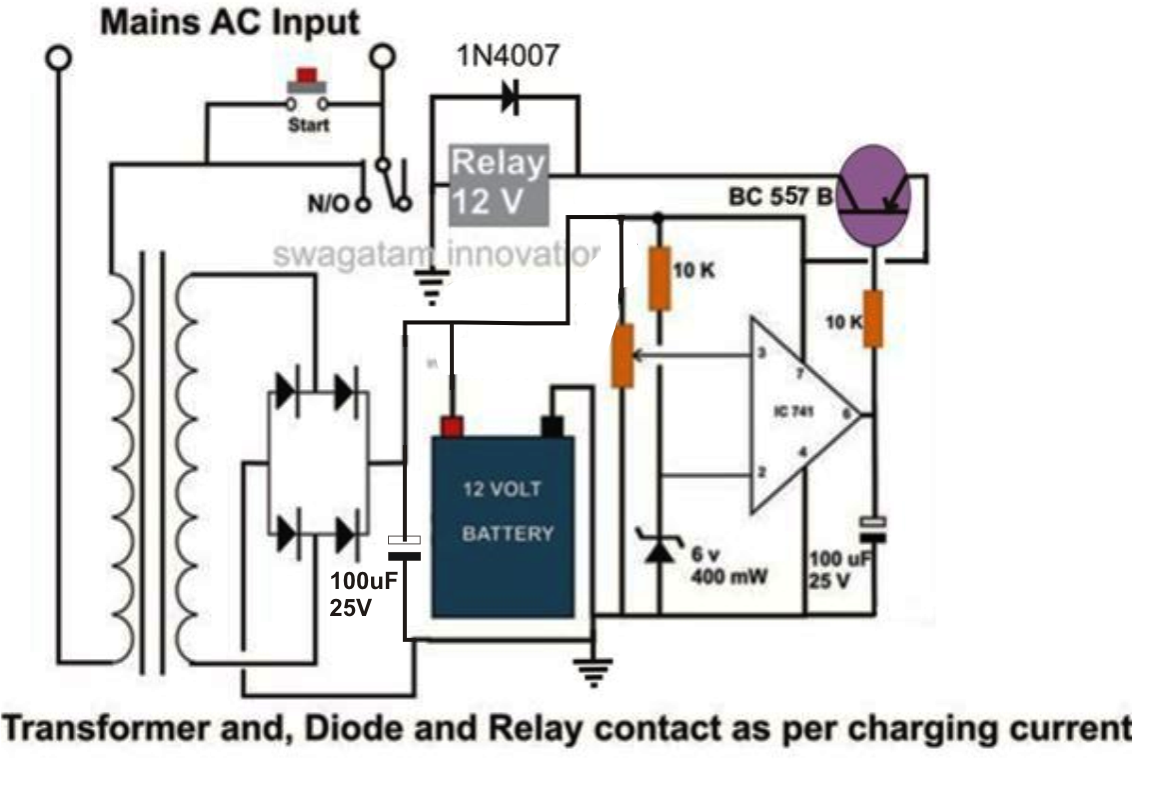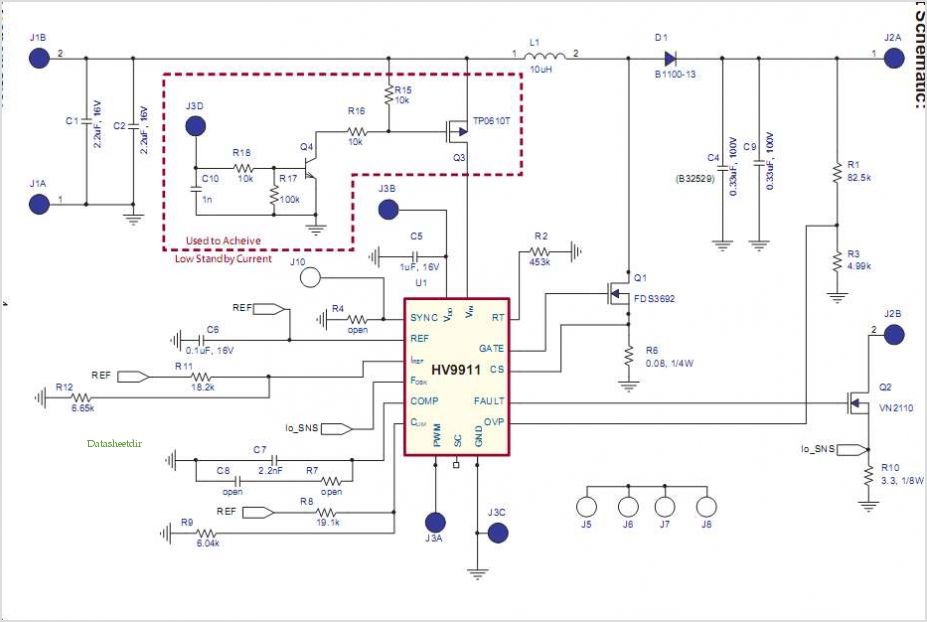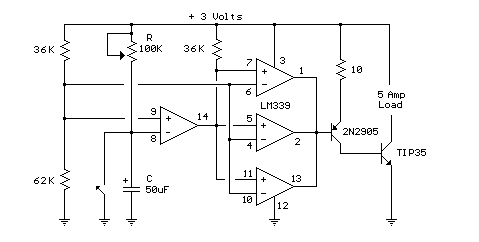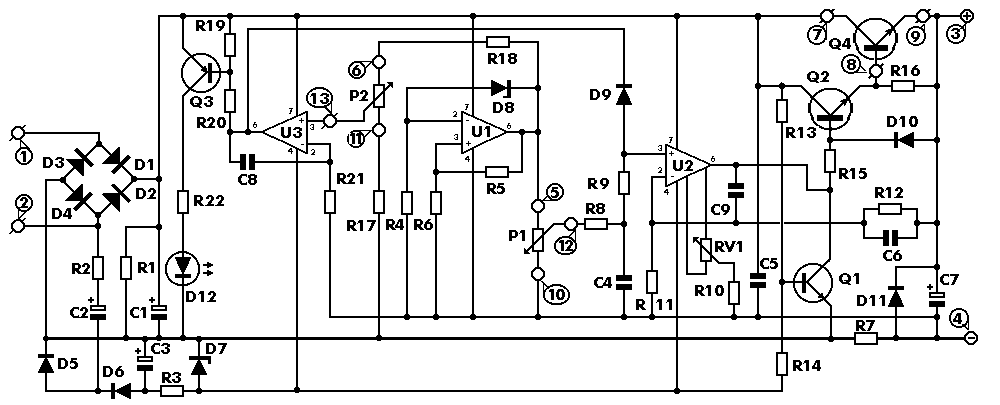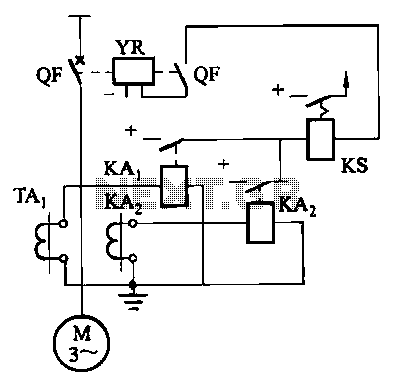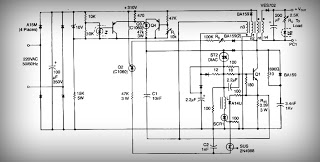
Variable current source 100ma-2amp
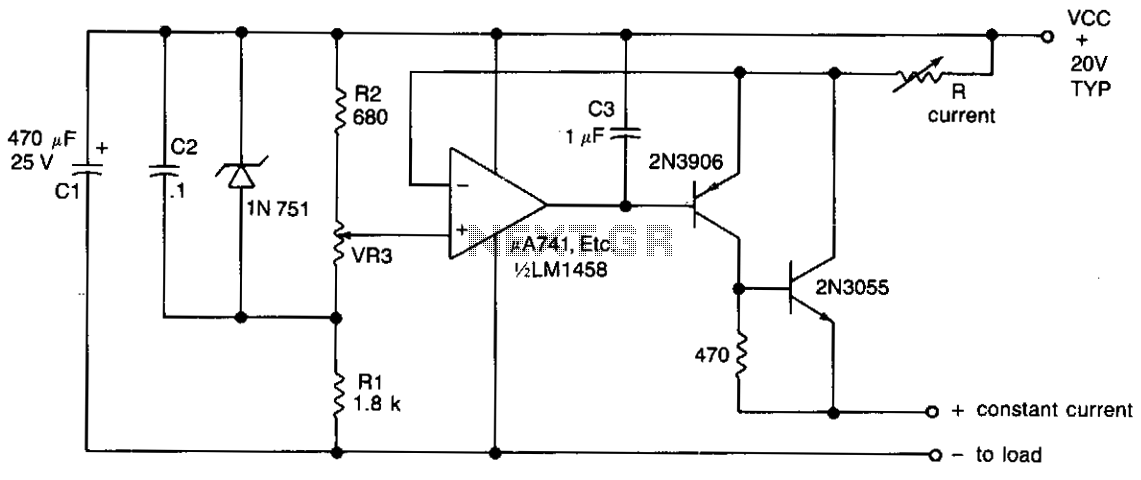
The output current is determined by the resistor R located in the collector of transistor Tr2. This resistor can be adjusted to provide a range of output currents from 100 mA to 2 A. Fine control is achieved through the variable resistor VR3, which modifies the reference voltage applied to the non-inverting input of the operational amplifier. Additionally, the feedback loop from the output to the inverting input of the operational amplifier ensures that a constant voltage is maintained across resistor R, which is equal to (VCC - VIN), thereby delivering a consistent current to the load.
The described circuit utilizes a transistor-based current regulator configuration, where the output current is primarily controlled by the resistor R in the collector of transistor Tr2. The ability to vary this resistor allows for a flexible output current range, which is essential in applications requiring precise current regulation. The variable resistor VR3 plays a crucial role in fine-tuning the reference voltage supplied to the non-inverting input of the operational amplifier (op-amp).
The operational amplifier is configured in a feedback arrangement, where the output is connected back to the inverting input. This feedback mechanism is vital for maintaining the desired current output. The voltage across resistor R is kept constant, equal to (VCC - VIN), where VCC represents the supply voltage and VIN is the input voltage. This constant voltage across R ensures that the current flowing through the load remains stable, regardless of variations in load resistance or supply voltage fluctuations.
In practical applications, this circuit can be employed in power supply systems, LED drivers, or any scenario where a stable and adjustable current is necessary. The ability to set the output current between 100 mA and 2 A with fine control allows for versatility in various electronic applications, making it a valuable design in modern electronics.The output current is set by the resistor R in the collector of Tr2, which may be varied to offer a range of output currents from 100 mA to 2 A with fine control by means of VR3 which varies the reference voltage to the non-inverting input of the op amp. The feedback path from the output to the inverting input of the op amp maintains a constant voltage across R, equal to (VCC-VIN) and hence a constant current to the load given 🔗 External reference
The described circuit utilizes a transistor-based current regulator configuration, where the output current is primarily controlled by the resistor R in the collector of transistor Tr2. The ability to vary this resistor allows for a flexible output current range, which is essential in applications requiring precise current regulation. The variable resistor VR3 plays a crucial role in fine-tuning the reference voltage supplied to the non-inverting input of the operational amplifier (op-amp).
The operational amplifier is configured in a feedback arrangement, where the output is connected back to the inverting input. This feedback mechanism is vital for maintaining the desired current output. The voltage across resistor R is kept constant, equal to (VCC - VIN), where VCC represents the supply voltage and VIN is the input voltage. This constant voltage across R ensures that the current flowing through the load remains stable, regardless of variations in load resistance or supply voltage fluctuations.
In practical applications, this circuit can be employed in power supply systems, LED drivers, or any scenario where a stable and adjustable current is necessary. The ability to set the output current between 100 mA and 2 A with fine control allows for versatility in various electronic applications, making it a valuable design in modern electronics.The output current is set by the resistor R in the collector of Tr2, which may be varied to offer a range of output currents from 100 mA to 2 A with fine control by means of VR3 which varies the reference voltage to the non-inverting input of the op amp. The feedback path from the output to the inverting input of the op amp maintains a constant voltage across R, equal to (VCC-VIN) and hence a constant current to the load given 🔗 External reference
